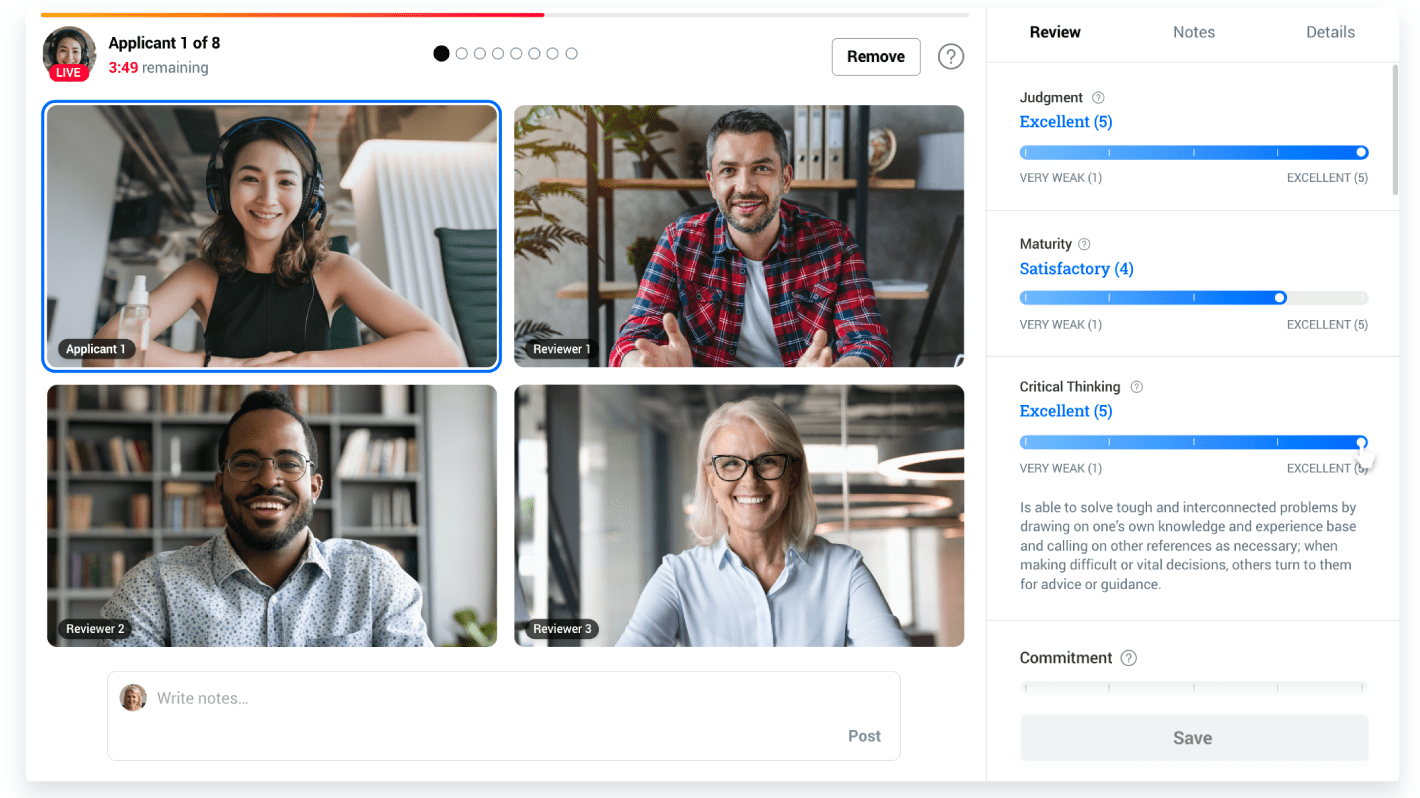Applicant numbers in higher education are rising. As a result, some admissions reviewers are assessing up to 200 applications per week.
That reality, coupled with the pressure to increase cohort diversity, can result in overwhelmed reviewers who are underprepared to equitably assess applicants.
Under these conditions, it's much easier for reviewer fatigue and other forms of bias to creep into the admissions process. And when these factors tamper with decisions, well-deserving students may not be given a fair chance of getting into college.
But it doesn’t have to be that way.
Here are four ways you can set your reviewers up for success and help ensure equitable assessments:
1) Create rubrics to define how applicants are scored
With time restraints in place, reviewers may only spend fifteen minutes evaluating and scoring an application.
In those situations, using a thoughtful and tested rubric increases the likelihood of a fair review.
But before incorporating rubrics into your process, it’s important that you train reviewers on how to use them.
Be sure to define any subjective terms (like “strong vs. weak”) in a training guide or session so there’s consistency among reviewers.
Afterwards, you can analyze the rubric results to gain insight into the effectiveness and fairness of your evaluation criteria.
For example, if all of your first generation applicants are scoring poorly in an evaluation area, you might become aware of unintentional biases in your rubric criteria.
2) Gather more context on your applicants’ high school experience
The high school experience of an applicant is just as important as their GPA or other academic metrics.
However, information on class rank, subsidized lunches, and average income isn’t readily available.
This creates a challenge for reviewers who want to make informed admissions decisions.
Research shows that reviewers who have in-depth information on high school contexts are more likely to admit low-income applicants compared to when they don’t have this information.
So to help your team make more equitable admissions decisions, consider gathering this context for your reviewers.
Jerome Furman, a high school counselor at New York City's Eastside Community High, currently does this as part of his job. He makes sure colleges receive Eastside High's "school profile” along with each application.
This brief yet concise document helps admissions professionals understand the school’s curriculum, grading system, and demographic makeup.
3) Determine and assess for core competencies
Applicants with extensive accomplishments are impressive, but applicants who haven’t had the same opportunities deserve a fair chance as well.
To level the playing field, create an evaluation framework based on competencies rather than experiences.
For example, imagine you’re looking for global mindedness in your applicants. Using a competency rubric will allow you to evaluate for it in applicants who have studied abroad and those who have participated in a pen-pal program.
By finding more ways to screen in applicants, you'll ensure that fewer are overlooked.
Learn about how a school admitted applicants exclusively with portfolios and competencies.
4) Enlist the help of non-alumni application reviewers
Many of us love our alma mater but does this mean we should decide who gets admitted? Maybe not.
According to a recent study, alumni may evaluate applications with more bias than non-alumni.
While most likely unintentionally, alumni may admit students with the best grades to increase the prestige of their alma mater. Alumni may also favor applicants similar to themselves due to in-group bias.
If you’re looking to change the demographics of students at your school or increase diversity, consider using trained reviewers who didn't attend your school.
Continuing the momentum
With these four practices in place, you’ll most likely see an increase in the diversity of your incoming class.
However, remember that the work doesn’t stop there.
While increasing diversity is important, it can backfire if your school isn’t prepared to support incoming students.
Depending on who you admit, it might be beneficial to increase student supports in the financial aid department, demographic-specific offices on campus, or supports for first-generation students.
After all, retaining a diverse group of students capable of thriving at your school is just as important as admitting them in the first place.



